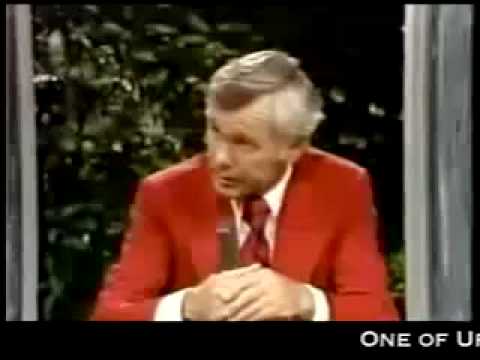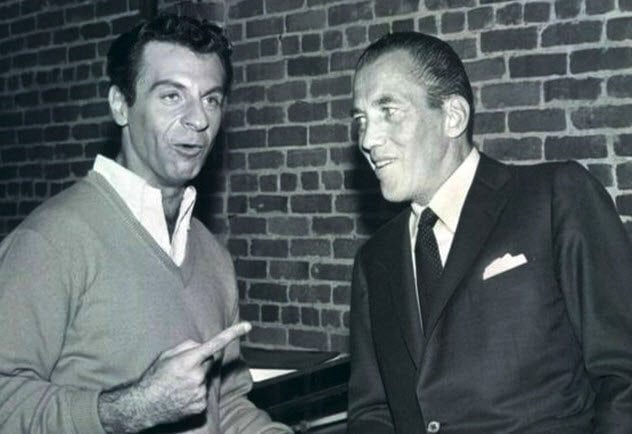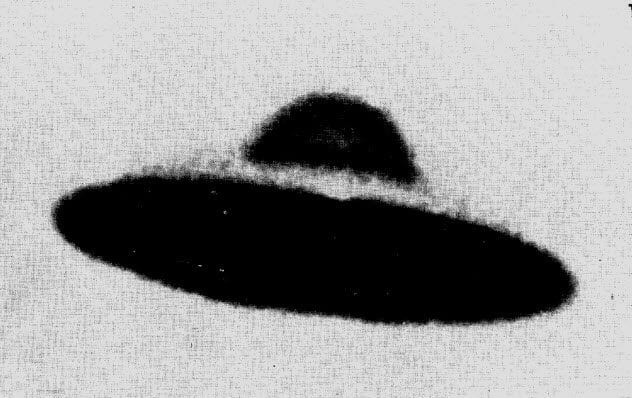More than a few of these files expose dark and unethical conspiracies. But hidden among them are a few mundane files that usually get overlooked. In them, a different side of the CIA comes out. Not everything the CIA does, it turns out, is part of some ingenious evil plan. In fact, a lot of it is downright ridiculous. As it turns out, the people behind this dark, shadowy organization are just people—and they’re every bit as stupid, geeky, and vain as the rest of us.
10 The CIA’s Hacking Team Are Nerds
When WikiLeaks exposed the CIA’s secret hacking program, WikiLeaks let the public see the whole searchable database that the CIA team used to make their software. And that database reveals something the CIA has long tried to hide: They are massive nerds. The leaked documents are littered with many jpegs of memes and references to pop culture. One of the tools is named after a World of Warcraft trading card. Another tool, named for the Philosoraptor advice animal, comes with a picture of a raptor asking, “If the zombie apocalypse happens in Vegas, would it stay in Vegas?” Another program, named after Ricky Bobby from the movie Talladega Nights, works alongside Cal, another program. “Cal is RickyBobby’s best friend,” the developer explains, before throwing in, “SHAKE N BAKE!” One document is just a list of “awesome tool names” that the developer says he “would very much like to use at some point because they are awesome.” He gives placeholder names like “Awesome McToolname” and “Starving Weasel.” The latter, he is sure to point out, is a reference to a Weird Al song. In the comments, a colleague approves. It reminds him, he explains, of a pretty killer punk band.
9 The CIA’s Guide On How To Identify A Homosexual
In 1980, the CIA wrote and distributed a guide on how to identify homosexuals. It’s hard to believe it when you read it, but apparently, they were completely serious about this. “There are few, if any, types of personnel investigation which are more complex,” the guide warns, “than the investigation of homosexuals.” Spotting a homosexual, the guide warns, demands “the full range of investigative techniques.” The writer warns against believing you can tell if someone’s gay by looking at them. After all, the guide points out, “very few employees come to work wearing eye makeup.” Apparently, this was how the CIA spotted gay men until they made this file. There are, however, a few ways you can identify them. As this guide written by highly paid intelligence officers assures us, homosexuals drive foreign cars. Also, many gay men have “front marriages” to lesbians to cover that these gay men are secretly engaging in “activities disgusting beyond the wildest imagination.” According to the CIA, the best way to spot a homosexual is to use gay “passwords.” The guide claims that only homosexuals know the words “gay,” “straight,” and “bi.” If you ask a prospective agent if he is gay and he recognizes the word, you have clear proof that you’re looking straight into the eyes of a homosexual.
8 Uri Geller And The Stargate Program
In the 1970s, an Israeli magician named Uri Geller was taking the world by storm by demonstrating how he could bend spoons with his mind. It was a pretty impressive trick, and some believed he really had psychic powers—until Johnny Carson exposed him as a fraud on TV. Before Geller went on The Tonight Show, though, he visited the CIA, which hired him as a “psychic warrior.” They were so convinced that this TV magician was real that they put millions of dollars into experiments testing his psychic powers. They locked him in a room, drew pictures on a piece of paper, and asked him to recreate the pictures. It’s weird to think that the US government spends its time testing TV psychics. But what’s really weird is that Geller aced the test. He recreated nearly every picture they drew or at least came very close to it. The CIA was convinced. They concluded that he had “demonstrated his paranormal perceptual ability in a convincing and unambiguous manner.” Geller insists there’s a lot that hasn’t come out yet. He claims that the CIA paid him to use his psychic powers to erase Russian floppy discs and that the CIA wanted to see if he could stop a heart or trigger a nuclear bomb with his mind.
7 Your Awful Coworkers May Be CIA Saboteurs
During World War II, the CIA released a guide called “Simple Sabotage.” Inside were their step-by-step instructions to bring down the Nazi war machine from the inside without getting caught. Now that sounds pretty badass, but don’t get your hopes up. It’s a lot less exciting than you’re imagining. For the most part, the tips were just ways to suck at your job. For workers, it has tips like: “Using a very rapid stroke will wear out a file before its time” and “When you go to the lavatory, take as much time as you can.” Managers are instructed to “talk as frequently as possible and at great length. Illustrate your points by long anecdotes and accounts of personal experiences.” It suggests that the saboteur should “haggle over precise wordings of communications, minutes, [and] resolutions” whenever possible. Every tip sounds a bit more like an annoying coworker than an industrial saboteur. One technique, in particular, could have replaced the whole pamphlet: “Act stupid.”
6 CIA Performance Reviews Are Ridiculous
A few excerpts from CIA employee performance reviews made their way into the declassified database. And the CIA, it turns out, gives some of the weirdest performance reviews on Earth. They’re all over the map. They range from unenthusiastic comments (“Subject manages to break even”) to gushing over unbelievable achievements (“He managed to conduct a three-hour conversation in a language he had never spoken before”). Other comments, like the one commending an employee for her “tremendous hours of uncompensated overtime,” tell us a bit more about what it’s like to work for the CIA than they might want us to know. Still other comments are downright confusing, like the one that just says, “She does not flap.” As pictured above, the greatest praise a CIA agent could earn is this one: “When he stubbed his toe, he recovered with grace.”
5 The CIA Gets Mad At Comedians Who Make Fun Of Them
During a top secret CIA meeting in 1968, Director Richard Helms announced something that had been greatly troubling him. “The Director noted that Mort Sahl apparently railed against the Agency on The Merv Griffin Show yesterday,” the minutes of the meeting note, “and asked Goodwin to obtain a transcript.” Mort Sahl was just a comedian. But after that meeting, the CIA watched everything he did. Afterward, they started keeping a record of every newspaper clipping that mentioned Sahl. They made notes of every time Sahl made fun of them, likely to be reported directly to Helms. There’s one that it’s tempting to read into a little too deeply. It might just be that the scanned copy got creased. But it sure looks an awful lot like someone scratched out Mort Sahl’s eyes. One document in particular gives away why the CIA really didn’t like Sahl. It’s pretty easy to imagine what was going through the agent’s mind when you see that, on a seemingly innocuous article, a CIA agent took his pen and repeatedly and angrily underlined the word “beatnik” under a picture of Sahl’s face.
4 Working With Drug Addicts
The CIA has been caught working with LSD before. One thing we don’t often think about, though, is what that work environment must be like. Because the thing about acid is that you have to work with people who take acid. One of those people was Alfred Matthew Hubbard, a man who was so involved in the rise of LSD that some called him the “Johnny Appleseed of LSD.” Until recently, there were only rumors that he worked with the CIA. But we now know for sure that, at the very least, they were in contact. When Hubbard found out that the CIA was working with psychics, he wrote a letter asking to be involved. The letter doesn’t give much insight into what he wanted to do. But the CIA does make it pretty clear what it was like to talk to Hubbard. The CIA wrote back, “Quite frankly, we are somewhat confused.” Apparently, Hubbard had started talking about psychics and then rambled something about power. By the end, they couldn’t really understand what he wanted to do. Hubbard had to have a friend write on his behalf. But the friend had to admit that he didn’t really understand Hubbard, either. The friend worded it carefully, saying, “His creative process is such that I’m not sure he knows what he would produce.” Still, it seems likely that they took Hubbard on. After all, as his friend pointed out, Hubbard wasn’t asking for money. He just wanted legal permission to take acid and see if it gave him psychic powers. And if it doesn’t cost them any money, the CIA may as well give a drug addict full security clearance.
3 Keeping Track Of Their Coolest Parties
A lot of the CIA’s online database is just newspaper clippings, and it’s hard to tell why they were kept. But sometimes, the words the CIA underlined give it away. There are a few articles that list celebrity balls that the CIA director happened to be attending. Like a proud mother, someone has gone through the articles, underlining the part where the director’s name is listed as a “celebrity” or alongside those of people like Mick Jagger and Donald Trump. One of the most heavily marked articles is entitled “CIA Chief A Cool, Cool Master Spy.” The article is full of references to secret CIA programs, like the U-2 Project, that you’d expect to be the CIA’s focus. But apparently, they didn’t keep the article because they were worried about government secrets. Instead, whoever marked it up underlined a few words that caught his eyes. “Spectacular achievement,” “triumphs,” and “greatest accomplishments” all got underlined, making it hard not to wonder who exactly was holding that pen.
2 Making Jokes About Soviets
One declassified CIA document is just a list of jokes with clear instructions that they are to be sent to the deputy director of the CIA. It’s possible, perhaps, that they were CIA-crafted jokes designed to break the spirit of Communism from the inside. But it seems a bit more like the deputy director just liked to laugh. They read: An American tells a Russian that the United States is so free he can stand in front of the White House and yell, “To hell with Ronald Reagan.” The Russian replies: “That’s nothing. I can stand in front of the Kremlin and yell, ‘To hell with Ronald Reagan,’ too.” A worker standing in a liquor line says, “Have had enough, save my place, I am going to shoot Gorbachev.” Two hours later, he returns to claim his place in line. His friends ask, “Did you get him?” “No, the line there was even longer than the line here.” A man goes into a shop and asks, “You don’t have any meat?” “No,” replies the saleslady. “We don’t have any fish. It’s the store across the street that doesn’t have any meat.”
1 Trying To Find UFOs
One of the biggest revelations when the CIA declassified these documents was that we finally had proof they’d been tracking UFOs. The CIA, the world was sure, knew more about space aliens than they were letting on. The more you look at the documents, though, the less it seems like they know. It appears that the CIA has had meetings about UFOs, has collected pictures of UFOs and analyzed those pictures, and has written whole guides investigating whether aliens really have come to Earth. But the CIA doesn’t actually seem to know the answer. They have the same pictures as conspiracy theorists have, and the CIA documents all focus on whether these things are real, not on how to cover them up. The CIA is just looking into what these UFOs are. Although a few agents seem to believe in aliens, most of them don’t seem convinced. If the truth is out there, apparently, the CIA doesn’t know it, either. But if you ever wanted to turn reading the National Enquirer’s reports on little green men into a full-time job, the CIA just might be the place for you. Read More: Wordpress
























